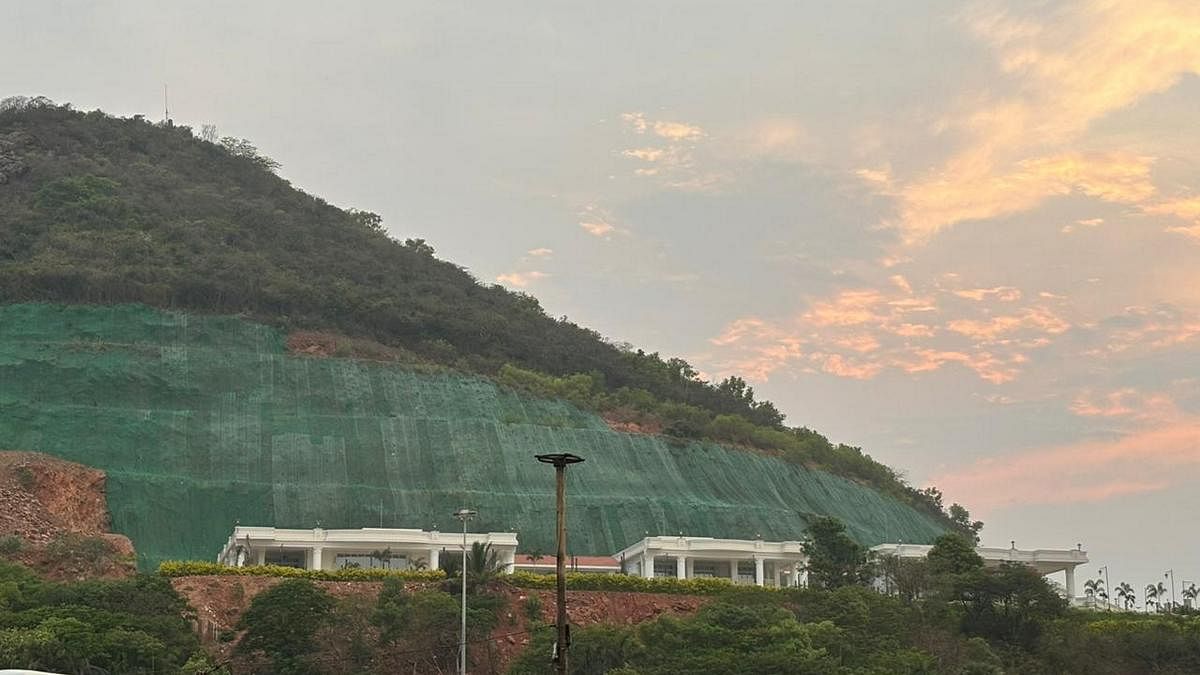So far, Vizag has carved a solid position for itself as one of the better Tier-2 cities. It’s easily the largest, most cosmopolitan, and best developed city in Andhra Pradesh since it was bifurcated in 2014, with former capital Hyderabad going to Telangana.
The unassuming port city, with its undulating hills and long coastline, is a nucleus of economic activity, an aspiring tech hub, and the ninth largest contributor to India’s GDP. It is the financial capital of the state, powering most of its economy — what Mumbai is to India, Vizag is to Andhra Pradesh. But it’s still not giving a contest to metros like Chennai or Bengaluru, or even Ahmedabad, and Surat.
Long overshadowed by Hyderabad in the pre-bifurcation era, Vizag still hasn’t taken off in the way many hoped, even ten years later. The Telugu Desam Party (TDP), which formed the first government under Chandrababu Naidu in 2014, chose centrally located Amaravati as the state capital. Then when the Jagan-led YSRCP took over in 2019, it set in motion a plan to make three capitals. While Amravati and Kurnool were to be the legislative and judicial capitals respectively, Vizag got top billing as the executive capital, the seat of the state government.
While this plan has met legal hurdles and is still stuck in the Supreme Court, the Jagan government in its manifesto has doubled down on the three-capital agenda as Andhra gears up to vote in both Assembly and Lok Sabha elections on 13 May. Last month, Jagan also released “Vision Visakha”, a 10-year road map to turn the city into a global metropolis through investments of Rs 1 lakh crore. But there’s some way to go.
CM @ysjagan’s Vision For Visakhapatnam. 🏙️ #VisionVisakha pic.twitter.com/7qqXGSTQpG
— YSR Congress Party (@YSRCParty) March 6, 2024
“After bifurcation, Chandrababu Naidu focused on Amaravati when he had no money. Now Jagan Mohan Reddy wants to make Vizag the capital, so he’s spruced up the city. But there is so much that could have been done that hasn’t yet been done,” said Naresh Kumar. “Naidu’s priority was Amaravati. Jagan’s priority is welfare schemes for the poor. The development of Vizag was not a priority for either.”
Still, Vizag has been undergoing a slow makeover over the last 25 years. While it’s always had industries and public sector undertakings, the investment activity has shot up since bifurcation despite ongoing challenges in connectivity, retaining talent, and attracting multinational companies.
Also Read: Decentralisation or ‘chaos’? Jagan’s 3-capital poll promise rekindles debate in Andhra
From sleepy town to almost-metropolis
Over the past 10 years, a construction boom has been transforming Vizag. Real estate prices have soared, roads are being widened, and new hotels are springing up. Several hills are being redeveloped to accommodate the burgeoning IT industry and the future seat of the state government—an answer to Hyderabad’s Banjara Hills and Jubilee Hills.
The transformation extends beyond infrastructure. The coastline gleams with glittering lights, street art and big brands line the commercial areas, while long-standing institutions like Andhra University and the exclusive Waltair Club maintain their prestige.
The city is home to the country’s eastern naval command, two huge competitive ports with a combined capacity of 300 million tonnes, and heavy public sector industries like the Visakhapatnam Steel Plant, Hindustan Petroleum, Hindustan Shipyard, National Thermal Power Corporation, and BHEL.

It has special economic zones like the Visakhapatnam SEZ and the Andhra Pradesh Medtech Zone, and is also a pharmaceutical hub with the Jawaharlal Nehru Pharma City. It also showed promise of becoming a formidable player in the private sector, attracting investments from IBM, HSBC, and Wipro, although its performance has been mixed on this front. Both IBM and HSBC phased out operations in Vizag, as have other private companies, and the IT enclaves are not as buzzing as they could be, which industry leaders offer various reasons for — like slow policies and an inability to attract human capital.
Still, Vizag offers many hallmarks of a metropolitan city, from uninterrupted power supply to the availability of all kinds of consumer goods, even as it retains its small-town charm, with its many beaches and green hills.
“Vizag is still a retirement city. For retired folks, you won’t find a more luxurious life than in Vizag,” said resident RV Prasad, who used to work at the Visakhapatnam Steel Plant and has lived in the city for over forty years. Currently on the Waltair Club Committee, Prasad also opened the first internet cafe in undivided Andhra Pradesh in 1998.
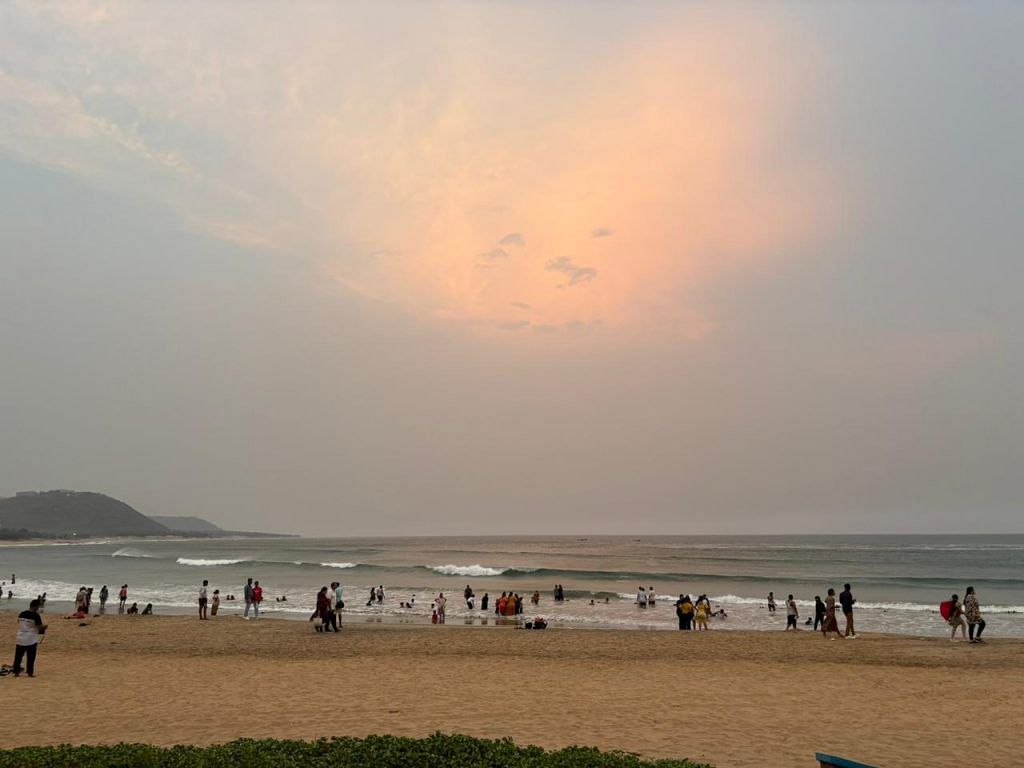
Prasad sees potential in Vizag, although he cautions against replicating the development model of other cities like Hyderabad.
“I don’t see Vizag growing to be like Hyderabad in the immediate future,” he said. “All of Andhra invested in Hyderabad — to pull off that kind of development and make it happen twice would be hard. Instead, with good governance and with enough incentives to attract and retain talent, it can reach a completely different kind of potential.”
For his wife Usha Prasad, however, Vizag offers the best of all worlds. “When I first came here it was a glorified village. Back in the day, we wouldn’t even get a range of fruits and vegetables in the city,” said the former Andhra Bank employee. “But over the years, I’ve grown to love the city so much — I can’t imagine living anywhere else.”
But the city’s sudden jumpstart into a “growth engine,” as CM Jagan described it last week, has brought growing pains, Residents complain of the rising cost of living, an increase in traffic congestion, and the sudden influx of ‘outsiders’, especially since it has driven up real estate prices. People also claim there’s an increase in crime.
Connectivity paradox
The unveiling of “Vision Visakha” and the decision to make the city Andhra’s executive capital have sparked fresh hope that Vizag will finally get its due and be propelled as a frontrunner among Indian cities.
However, a major hurdle is yet to be overcome. Located in the state’s northeastern corner, nestled between the sea and the Eastern Ghats, Visakhapatnam’s historical isolation hampered its connection to the rest of Andhra Pradesh. And at least two major projects for bolstering the transport infrastructure have been stalled for years.
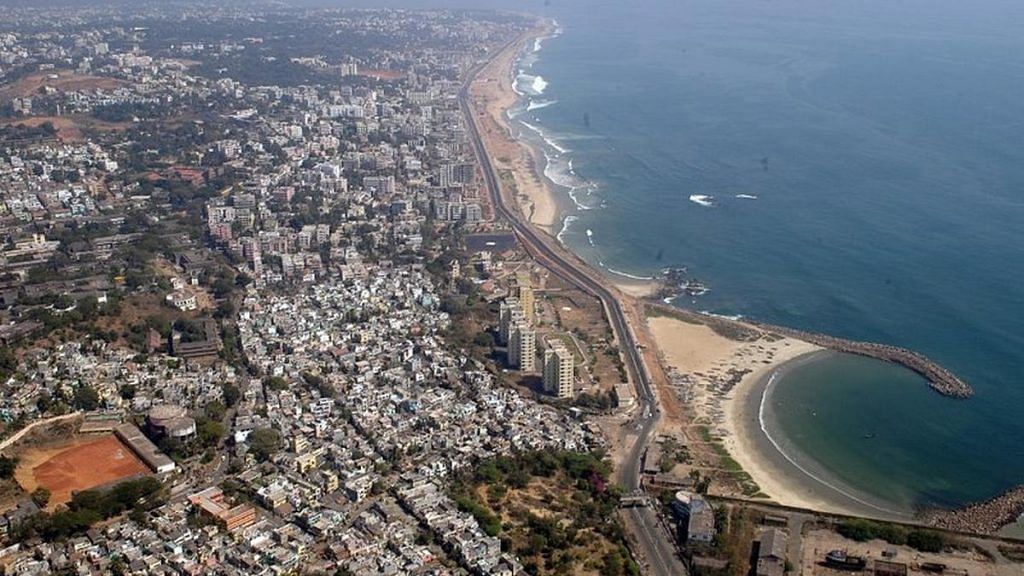
The nearly 800km long Visakhapatnam-Chennai Industrial Corridor (VCIC), which will be India’s first coastal corridor, hasn’t been completed even though work started several years ago. The corridor, which will link less developed areas with industrial and urban clusters and improve transport infrastructure.
“The VCIC should get top priority. With an excellent road, a powerful network will come up and more growth can take place,” said an industry leader.
Similarly, the Bhogapuram Airport, which the GMR Group is building, has been in the works for nearly a decade and still hasn’t taken off — though both Naidu and Jagan have laid foundation stones for it. The airport, located between Vizag, Vizianagaram, and Srikakulam, is meant to serve northern coastal Andhra.
Until the airport is operational, road transport remains the only option for many industries, including pharmaceuticals. Cargo from Vizag’s pharmaceutical parks is taken by road to airports in Hyderabad, Chennai, and Bengaluru at huge costs due to the need for temperature-controlled transportation of pharma products.
Paradoxically, however, Vizag’s location also holds the key to its growth — because of its global connectivity.
As a port, Vizag has always been an integral link for Indian exports, serving not only Andhra Pradesh but also Telangana, Chhattisgarh, Odisha, Bihar, and Jharkhand. It even handles 80 percent of Nepal’s cargo.
“It’s a transparent port, there’s lots of industrial activity and anyone can come and do business — all of East Asia is accessible. Mangoes, for example, are currently being exported from Visakhapatnam from Russia to South Korea,” said one industry leader who asked not to be named. “The Visakhapatnam port is also in competition with the private Gangavaram port, which is good for business. When cargo moves from here, locals have the advantage — regardless of political party in power.”
The same leader said that if MSMEs were incentivised, they have the option to only locally produce but also re-export from the same port.
“The government has designed a beautiful policy that’s improving connectivity, but none of that has happened. Things have been stagnant over the last ten years — not to blame the TDP, the YSRCP, or even the BJP,” said Kumar. “It’s just how it is.”
Also Read: YSRCP’s ‘brand ambassadors’ or public servants? CM Jagan’s ‘army’ of volunteers has Opposition on edge
Untapped tourism potential
Residents credit Vizag’s cosmopolitan character to two main factors: the presence of several central government headquarters, which attracted employees from across the country, and the naval base.
But what could really catapult Vizag into a top destination is improving its tourism infrastructure — something that the incumbent YSRCP government is extremely focused on, outlining a Rs 2,200 crore plan for the sector in Vision Visakha.
“There is a lot of scope in a city like this,” said Pavan Kartheek, vice president of the Andhra Pradesh Hotel Association and Secretary of the Andhra Pradesh Tourism Forum. “Vision Visakha, even if fulfilled 50 percent, will make Vizag a metro in the next five years. The government is very supportive and receptive to us, it has a vast plan to develop hubs to attract tourists.”
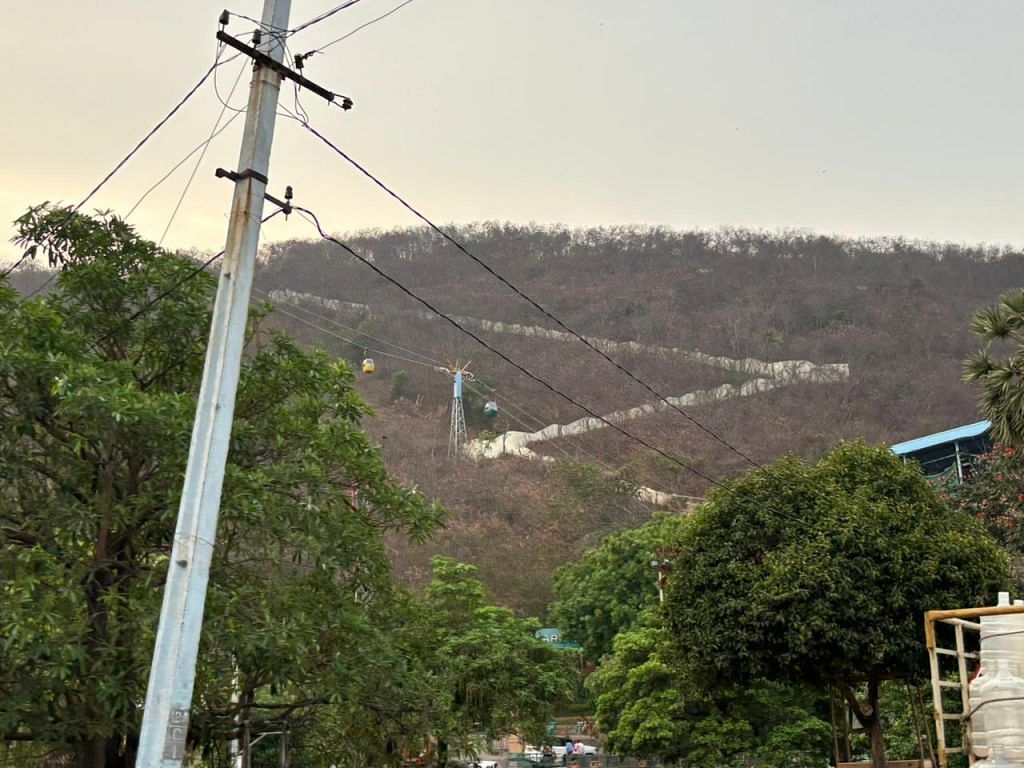
Currently, Kartheek acknowledges, regional tourism to the city has been impacted by the overall development of Odisha capital Bhubaneswar. Many tourists from West Bengal, Chhattisgarh, and Odisha now choose Bhubaneswar over Vizag, he said.
Nevertheless, a concerted effort to improve tourism is visible across the city. Beaches are bustling every day of the week, offering a variety of entertainment options, from ziplining across hills to water sports. The coastline also has a growing number of hotels, reshaping the city’s skyline. Roads have been beautified, and the coast is well-lit at night.
Nightlife, however, is still limited. “We’ve submitted a memorandum to improve nightlife in the city — that’s what will truly help cosmopolitan culture grow,” said Kartheek.
People problem, empty offices
A major hurdle in Vizag reaching the next level of its growth has been retaining talent. Even before bifurcation, many locals migrated for jobs in Hyderabad or Bengaluru. This continues today, with few choosing to return.
The Covid-19 pandemic, however, flipped the trend for a while. Kumar said Infosys opened up in Vizag so that many workers who moved back to their hometowns in Andhra during the pandemic could continue to explore a hybrid model of work.
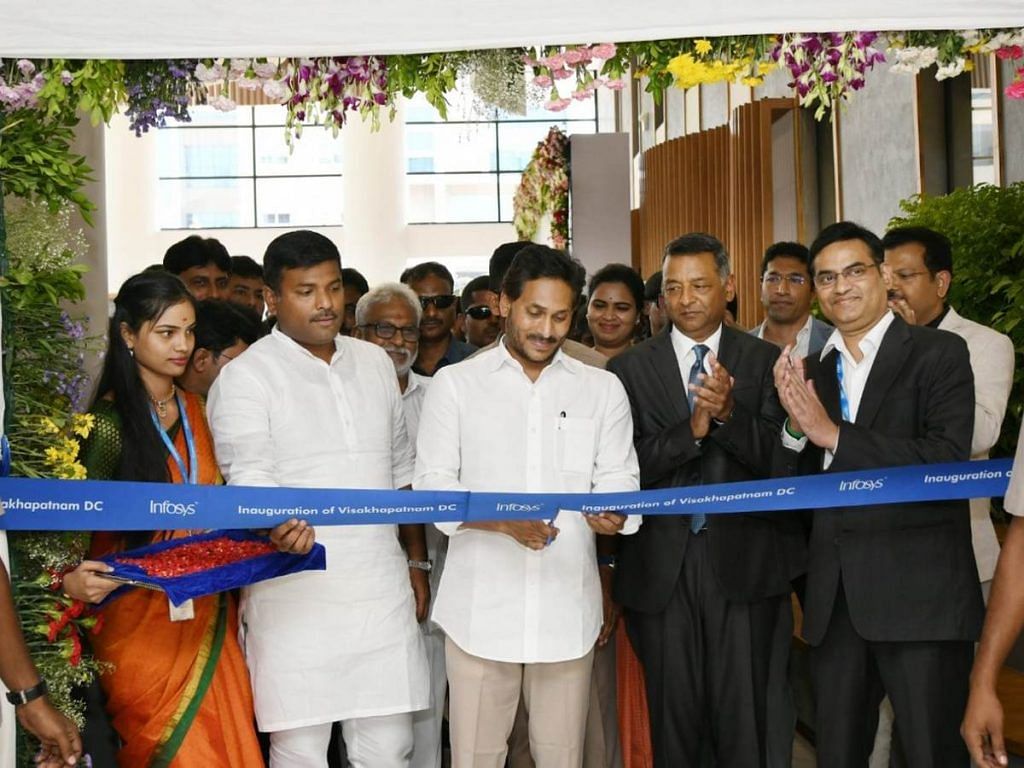
But overall, a shortfall in human capital has hindered the IT sector’s growth despite the infrastructure being in place. Rushikonda Hill, where the YSRCP’s camp office stands, is also home to ‘IT Hills’, a tech enclave under development since Naidu’s rule in undivided Andhra. Both Naidu and YS Rajsekhar Reddy developed Hills 1, 2, and 3. Of these, Hills 2 and 3, where IBM once had its headquarters, took off initially. However, the state hasn’t been able to retain such giants, and so much of the infra languishes.
“The growth of Vizag has remained static because the government hasn’t released any IT incentives in the last five years, and has destroyed the credibility of industry in Andhra by not honouring agreements,” said Kumar. These, he added, were among the reasons why companies like IBM and HSBC left the city.
As reported earlier by ThePrint, other industries such as Amara Raja Batteries, Page Industries (which makes Jockey underwear), and mall chain Lulu also exited the state and moved instead to neighbouring Telangana in a quest for a more welcoming business environment.
“While good, high-quality space is available, nearly 80 percent remains unoccupied. Getting people to Vizag and retaining them is a challenge. A forward-thinking industrial policy could change this,” said Kumar.
However, he added that despite such hitches, “silent progress” is being made in industry and business.
“As a city, the slow and steady Vizag we love has changed,” added Kumar. “We’re yet to see what kind of Vizag it can become.”
(Edited by Asavari Singh)
Also Read: Once buzzing with development, Andhra’s ‘to-be’ capital Amaravati now lies in a heap of dashed hopes

